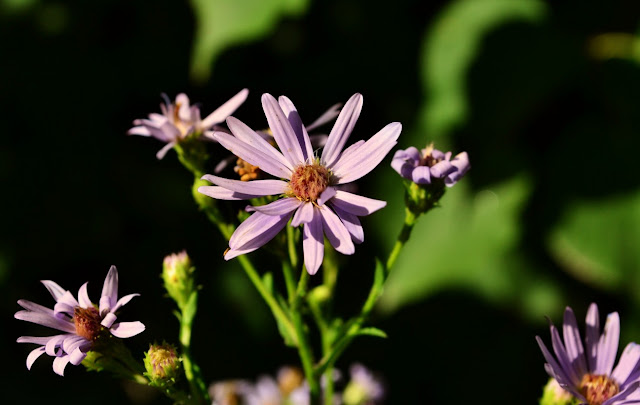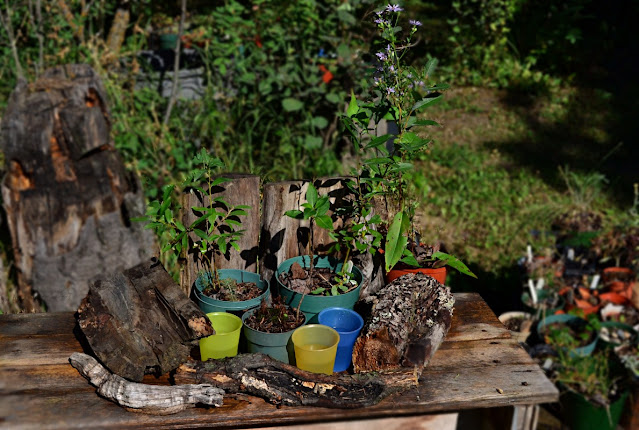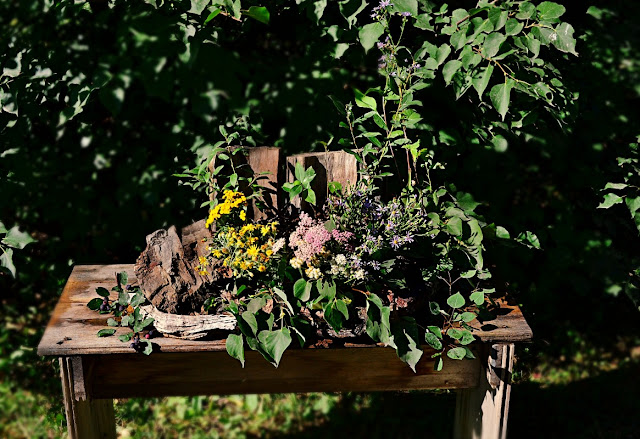(Note: as I read and learn more over time, I have new questions- see some more recent posts for perhaps slightly different takes on the roles/origins of various goddesses. Is Māra the primordial goddess or is she of Indo-European origin? a hybrid? Is she the same as Laima? is Ragana the true original Bird Goddess of earth/water/sky? are they all aspects of the One?)
Like most primal goddesses of nature, life, death, fertility, the original deity is not really good or bad, rather somewhat ambivalent to human concerns. This seems to me to be a natural representation of the forces of nature- providing all the bounty for life to thrive, yet able at a seeming whim to take life in a tragic moment, a failed crop, a harsh winter. While Latvians seem less inclined to this fearful approach to worship than some, with the negative aspects of deities downplayed, they do still have customs designed to encourage, beg, or compel beneficial divine activity.
There has been considerable debate as to whether Māra is a pre-existing indigenous Baltic deity or a later adaptation of the Christian Virgin Mary, or some blending of the two things. In the eastern, Catholic part of the country, the melding of the two traditions is strong, whereas the rest think of Great Mother Māra as quite distinct from the Christian Virgin Maria. There seems now to be quite good evidence both in the roots of language and in folklore that Māra is a genuine Baltic figure, regardless of any later adaptations to Christianity.
 |
| Symphyotrichum/Wild Aster as Part of Altar or Offering for Mara Day |
Up to this point, we are talking about anthropology, ethnography, cultural history. These are all interesting topics to me, but my interest is also more concrete- I'm interested in developing a personal set of observances: based on the beliefs of my mother's ancestors, yet adapted to my circumstances, knowledge and understanding. As I've discussed previously, I think seasonal and nature based observations/celebrations can help to ground us in the world around us and help remove our separation from the rest of being. At the same time, while I currently live in the countryside, I am not a pre-industrial farmer entirely at the mercy of the seasons and random natural forces. I prefer to see the risks and ambivalence of life as simply part of a whole- the Great Mother not as a jolly (if uneven) bestower of gifts, but neither a tooth and nail danger in the dark. Rather I celebrate the great feminine principle of Life/Being itself-vast, rich, beautiful, mysterious, ebbing and flowing. Myriad individual expressions appearing, flourishing, fading, reabsorbed, transformed, reborn, continuing.
 |
| Heterotheca/Golden Aster, Achillea/Yarrow as Part of Altar or Offering for Mara Day |
Māras or Great Mother Day, Summer Mara Day (she was in fact celebrated four times a year, as befits a great goddess!) is August 15. The modern date has been shifted to overlap with the celebration of the Virgin Mary on that date, but more importantly the origin is midway between Jani/Summer Solstice and the End of Harvest/Mikeli, and should be earlier,
August 6/7. I'll be thinking of the dark, fertile earth, sheltering nurturing forest, the great tapestry of life. Always present is the sense of ripeness, decay, death, but those thoughts will be brought to the front more as the season slips to winter- never a distant thought in northern climates!
Just ahead of the day (August 12, the nearest suitable day off from work!), I chose to make an altar or offering. I've done this for a few other observances, and I find the process meditative. I start with an idea of basic symbolism (very simple in this case, as an Earth/Fertility Goddess, all the bounty of the earth- berries, flowers, leaves, soil, wood are relevant), then gather items from around the acreage. As each item is chosen from garden, forest, clearing, I'm thinking of its place in a meaningful and beautiful display in honour of the day, and the deeper themes that underly it. At this time I'm thinking of the richness of the season, gratitude to nourishing (physically and spiritually) Earth, but also the beginning of the end (wait, didn't I already say that at Summer Solstice? jeepers, short summer and all I can think of is that it will soon be over!). The flowers are end of season flowers, many are in seed, crops are ripening (I chose to leave those for a later observance, apart from the last of the summer berries), leaves are in their darkest deep summer colour, before green is drawn back into the Earth to await a new spring. There is a sense of approaching autumn and inevitable winter beyond it, as Sun/Saule grows milder and mornings crisper.
 |
| Beginning the Altar for Mara Day |
Starting with a wooden bench, built by my mother and grandfather, freshly scrubbed, I began the display with pieces of wood left from last winter's firewood harvest (bits too nice to burn!), symbols of the forest, trees that sprout from the soil, reach into the heavens, eventually to fall and return to the soil enriching new life, or burn to ash, scattering their essence to sky and earth.
I next added several pots of small native willow and poplar trees (trees important to Mara as noted above, and a crucial part of the boreal ecosystem here). I often have volunteer saplings in outdoor seed pots; others are removed from places they germinate in garden beds. They are growing in native soil, maintaining the connection to the greatest Mystery and source of Life, the Black Earth.I placed small cups of water in front of the pots to hold flowers. At this point I realised it would be more fitting (and more photogenic!) to move the bench over a few feet, beneath a sacred Linden (Tilia) tree, planted by my mother!
 |
| Populus temuloides/ Aspen for Mara Day Altar |
 |
| Salix/Willow for Mara Day Altar |
 |
| Mara Day Altar Beneath Tilia/Linden Tree |
Branches of Aspen and Linden were added, along with a branch of Amelanchier/Saskatoon with berries, to layer the symbolism (and hide the plastic cups!). Next, wild Asters- flowers that straddle mid-summer and autumn (and earth to sky, if you think of the meaning of the name Aster=Star), also in pots as well as cut.
 |
| Amelanchier/Saskatoon for Altar Mara Day |
More flowers: native Everlasting/Anaphalis, Golden Aster/Heterotheca and Harebells/Campanula from the garden, Yarrow/Achillea (wild plants and hybrids with garden cultivars), and Tansy /Tanacetum. Each one has meaning for its season of flowering, for its presence in the summer and/or winter landscape, for history of medicinal use.
 |
| Summer Mara/Great Mother Day Altar |
 |
| Summer Mara/Great Mother Day Altar |
The day was warm and dry, with the late summer hum of pollinating and scavenging insects all around, and as I built the display, wasps, flies and flower flies began to visit the flowers and leaves. Humans love to scorn predatory and scavenging creatures such as wasps and flies, but think for a moment about the vital roles they play in our ecosystems and gardens/fields: controlling other insects that eat plants, recycling waste into nutrients, even pollinating. They often live in trees or holes in the ground, dark places of the Goddess, and surely Mara must approve of such industrious creatures! I was happy to see my altar continuing to function as part of the living world around.
 |
| Fly on Tanacetum/Tansy w/Willow on Mara Day Altar |
 |
| Wasp on Heterotheca/Golden Aster on Mara Day Altar |
Wishing you all a Blessed, Thoughtful and Present day as we slide from summer to autumn (slowly or quickly depending on where you are, or into spring if you are in the Southern Hemisphere!). Remember that gentle ritual can ground you in the Earth and seasons, take you out of the all too human constructed world of obligation, literalism and stress!
Comments on the ease of reading on this platform are welcome. I'm also starting to experiment with Wordpress. You can find me on
If you are able and would like to support me, I have a Ko-fi page support helps me keep working-more research, more writing, more art.
(see this post for musings on support sites: https://cohanmagazine.blogspot.com/2021/01/fiction-feedback-and-finances.html ).
A little reading on Mara Day.


Beautiful - thoughtful - thank you!
ReplyDeleteThanks, glad you enjoyed it!
ReplyDelete